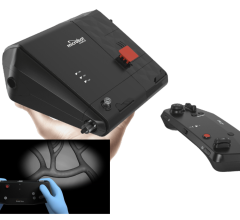Transradial Approach (Left vs. Right) and Procedural Times During Coronary Procedures: TALENT study
Alessandro Sciahbasi, et al. American Heart Journal, 2011, 161: 172-9
Study design: Prospective, randomized 1,467 patients (Jan. 2009-Dec. 2009) to right radial approach (RRA) or left radial approach (LRA).
Primary endpoint: Fluoroscopy time for diagnostic angiography and percutaneous coronary intervention (PCI) evaluated independently
Results: Diagnostic angiography:
• LRA had lower fluoroscopy time (146 sec. vs. 168 sec.)
• LRA less radiation exposure to patient (dose area product: 10.7 Gy cm2 vs. 12.1 Gy cm2)
PCI:
• No difference in fluoroscopy time between groups
Of note, differences between LRA and RRA were limited to patients ?70 and inexperienced TR operators
Bottom line: • Left radial access is associated with lower fluoroscopy times and radiation exposure to the patient.
• This advantage seems to be evident in inexperienced operators and elderly patients
Randomized Comparison of Transradial Coronary Angiography
Via Right or Left Radial Artery Approaches
Yumiko Kanei, et al. American Journal of Cardiology, 2011, 107: 195-197
Study design: Prospective, randomized 193 patients (6/09-8/09) to either right or left radial approach
Primary endpoint: Procedural difficulty: 1) use of hydrophilic or coronary wire for tortuosity, 2) stiff wire use for engagement, 3) ?3 catheters used for either ostium, 4) inability to selectively engage coronary artery
Results: No difference in procedural difficulty between right and left radial approaches (17 vs. 20%). Fewer catheters were used and lower overall procedure time was noted with the right radial approach.
Bottom line: Procedural success was similar between right and left access sites.
Sheathless Transradial Intervention Using Standard Guide Catheters
Aaron M. From, et al. Catheterization and Cardiovascular Interventions, 2010, 76: 911–916
Study design: • Case series of 10 patients undergoing sheathless transradial percutaneous coronary intervention (TR-PCI)
• Sheathless guides were created using 125 cm long, 5 or 6 French diagnostic catheters serving as a taper for a 7 or 8 French Vista Brite tip guiding catheter (Cordis Corp.)
Primary endpoint: Procedural success, access site complications
Results: • 7 French guiding catheter utilized in 6/10 patients and 8 French system in 4/10 patients
• 14/15 lesions treated successfully
• No access site complications
Bottom line: Sheathless TR-PCI is safe and effective
Comparison of Procedural and Late-Term Outcomes
Revascularization for Unprotected Left Main (UPLM) Coronary Artery Disease: Transradial Versus Transfemoral Method of Percutaneous Coronary
Yue-Jin Yang, et al. Journal of the American College of Cardiology, Cardiovascular Interventions, 2010, 3; 1035-1042
Study design: Prospective cohort series, patients recruited between April 2004 and April 2009 from a single center in Beijing, China
Primary endpoint: Angiographic, procedural success, MACE and bleeding events
Results: 821 patients (353 TR and 468 TF) underwent UPLM PCI with DES. LM bifurcation disease and bifurcation stenting more common in TF approach. Similar angiographic, procedural success and MACE rates. Shorter hospital stays and less TIMI bleeding in TR group (0.6 vs. 2.8%, p=0.02)
Bottom line: LM stenting can be performed safely using the TR approach. Access site should be chosen based on lesion characteristics


 January 14, 2025
January 14, 2025 







